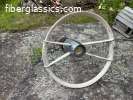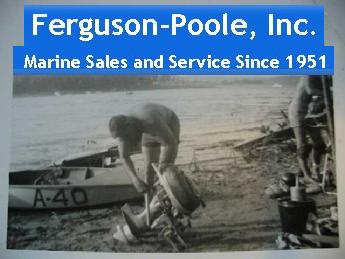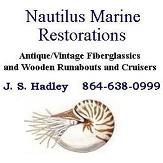"Solid Wood Cores
"It didn't take long for boat builders to realize this was the worst possible core material. In fact, I find it shocking that it wasn't automatically dismissed by every boat builder on earth from day one. Solid wood is great for building wooden boats. Solid wood as a core material in a fiberglass construction is a disaster waiting to happen.
"The only reason it's included in this list of possible core materials is to explain why it shouldn't be on this list.
"Solid wood expands and contracts at a much greater rate than fiberglass. Solid wood has very low shear strength. Solid wood is more rot-prone than any other material. Solid wood had very low compressive strength. Solid wood is not a suitable core material under any circumstances!
"End Grain Balsa
"OK. Now we're getting into a substance with some redeeming qualities. End grain balsa is a widely used core material for three reasons. It is light-weight, It has decent compressive strength, and it's cheap.
"Weight is a factor that I haven't addressed yet. This is a pretty good spot to mention it.
"Naval architects don't just take the shape of the hull into account when designing a boat. Hydrodynamics, or how a boat moves through the water is a combination of hull shape and displacement. Displacement is a measure of how much water is displaced when a boat is floating. This is not to be confused with weight because where you put the weight in a boat will affect it's displacement.
"Don't worry, I'm not going to spend an inordinate amount of time on this subject because A) it's not particularly good reading and more importantly,

I don't have a firm grasp of the science behind hydrodynamics. This is what I do know:
"Naval architects take these complex equations into account when they design boats. Replacing a transom with a much lighter core may improve the overall riding characteristics of the boat, but it may not also. If the designer has intended for the transom to weigh x, then +/- x may alter the hydrodynamics of the boat. I don't know and I don't claim to know.
"When I repair a transom, I try to keep the weight of everything as close to the original design as possible. If I knew a naval architect who was willing to tell me what the optimum weight is for a specific transom, I'd be happy to work within those parameters. Until then, I stick with what works.
"Back to the balsa core. Balsa is generally used as a core material in hulls and decks, but not usually as a transom core because, while it's compressive strength is decent for bedding hardware without deforming the laminate, asking it to withstand the pressures exerted by an outboard motor is over the line.
"Furthermore, balsa turns to mush when it gets wet. Balsa core is great on paper, but any moisture penetration is a death knell for this core material.
"Plywood
"What is the difference between marine grade plywood and the plywood you buy at Home Depot? There are two differences. The first is the glue that binds the plies together. Marine plywood will use an exterior grade glue that is UV resistant. Regular exterior grade plywood uses the same glue.
"The other difference is the number of voids in the plywood. Marine grade plywood should have no voids at all. A standard exterior grade plywood from a hardware store will have multiple voids throughout all the inner plies of the wood.
"Think of these voids as the seeds from which delamination grows. As the boat flexes underway and the motor vibrates against the transom, any voids in the core will quickly spread to wide areas of delamination.
"Because plywood alternates the grain direction between plies, it is inherently more stable than solid wood or end grain balsa. The best marine plywoods will also use plies made from wood that are highly stable such as Okoume and Meranti.
"Plywood as a core material is the first in this list that is appropriate for transom repair. Plywood is less susceptible to rot than Balsa and has a much higher compressive strength. This means that you can hang your twin outboards on a plywood cored transom without worrying about whether the transom will deform around the fasteners.
"Additionally, most classic fiberglass boats were build with plywood transoms. This means that replacement with the same product will not adversely affect the weight of the boat.
"The down side to plywood is that while it's less susceptible to rot than the previously mentioned options, it isn't “rot-proof”. Plywood, mixed with water, and encapsulated in fiberglass, will just as conclusively, rot away to mush. It will just take a little bit longer."
This is from Transoms, Floors, and Stringers by Jamil















